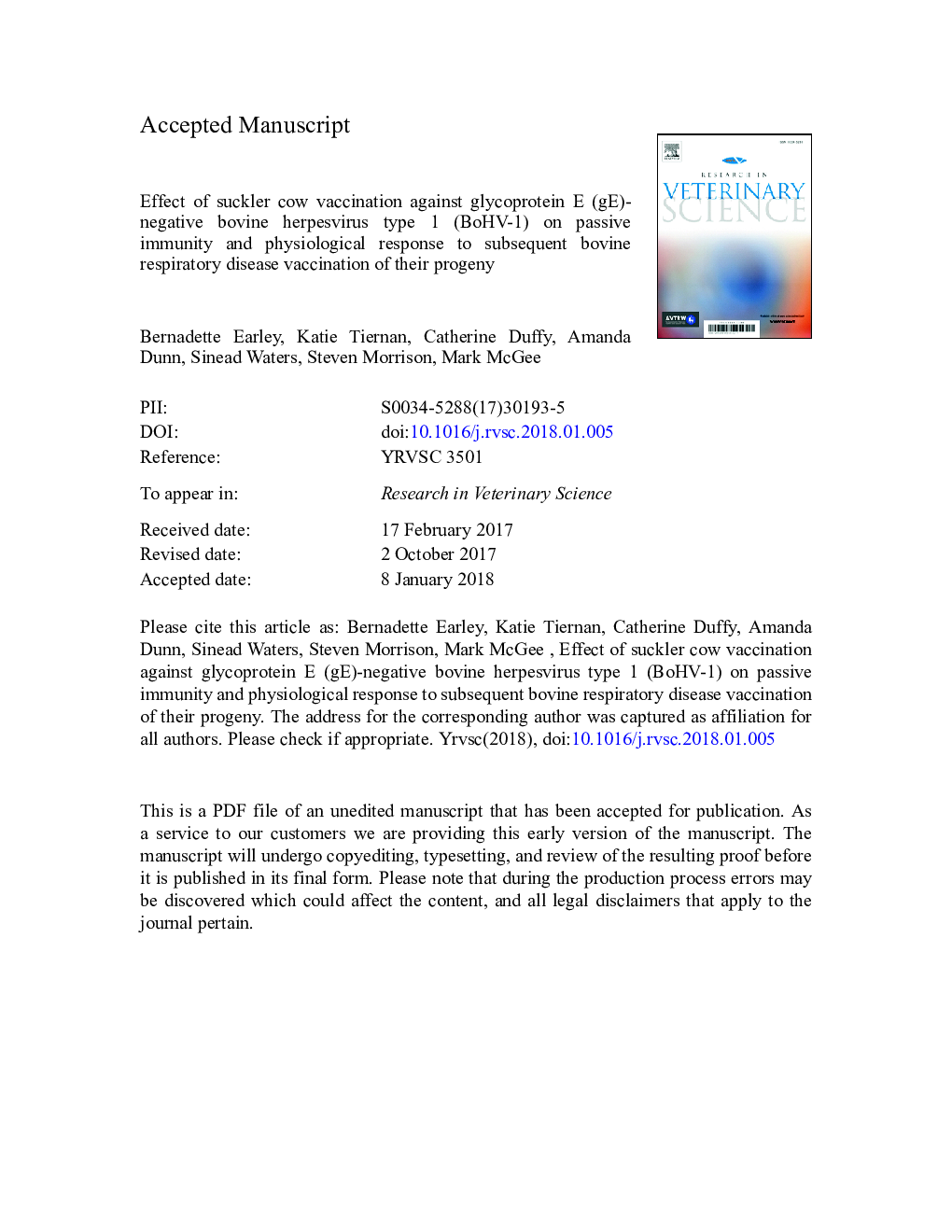| Article ID | Journal | Published Year | Pages | File Type |
|---|---|---|---|---|
| 8503981 | Research in Veterinary Science | 2018 | 39 Pages |
Abstract
The study objectives were: 1) to characterise the development of immunocompetence in beef suckler calves from birth to three months of age, and 2) to trace glycoprotein E (gE)-negative bovine herpesvirus type 1 (BoHV-1) antibodies from dam to calf and subsequent vaccination against pneumonia. Thirty multiparous beef suckler, spring-calving cows, consisting of two genotypes were involved; Limousin Ã Friesian (LF) and Charolais Ã Limousin (CL). Cows were immunised against the inactivated antigen strain of BoHV-1 (gE- (IBR marker vaccine) at day â 84 and received a booster at day â 56 relative to the expected calving date (d 0). Calves were immunised at 14 and 42 days of age against PI-3 virus, BRSV and Mannheimia (Pasteurella) haemolytica serotype A1 using a commercial vaccine administered subcutaneously. Additionally, calves were immunised against BoHV-1 at 42 days of age, using 1 dose of a live commercial vaccine administered intranasally. Blood samples were collected from all calves (n = 30) via jugular venipuncture at birth, prior to colostrum feeding (0 h), at 12 h (h), 24 h, 72 h and 168 h after the initial feeding of colostrum, and at d 7, 14, 28, 42, 56 and 84 post birth. The mean ratio of gE negative antibodies circulating in the blood of LF and CL dams pre-partum scored negative to gE ab (S/N â¥Â 0.70). Antibody levels of BoHV-1 (wild type (wt)) peaked at 12 h post-birth in calves and declined thereafter, as the maternal antibodies decayed. There was no difference in BoHV-1 and BRSV antibody levels in calves post vaccination.
Keywords
Related Topics
Life Sciences
Agricultural and Biological Sciences
Animal Science and Zoology
Authors
Bernadette Earley, Katie Tiernan, Catherine Duffy, Amanda Dunn, Sinead Waters, Steven Morrison, Mark McGee,
